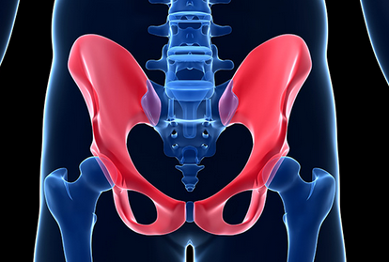Sacroiliac Joint Pain Specialist

NY Neurology Associates
Neurologists & Pain Medicine located in Upper East Side, New York, NY & Upper West Side, New York, NY

Sacroiliac joint inflammation is a common cause of pain in the low back and legs. The team at New York Neurology Associates uses x-ray-guided sacroiliac joint blocks to help patients from Long Island, NY, and the Upper East Side, Upper West Side, and Downtown neighborhoods of New York City relieve pain without resorting to surgery.
Sacroiliac Joint Blocks Q & A
What is the sacroiliac joint?
The sacroiliac joints are the joints that form where the large bone called the sacrum in the lower back meets the ilium bones that form part of the pelvis or hips. Sacroiliac (SI) joint pain is a very common cause of lower back pain, especially among older men and women and among those whose jobs or hobbies entail repetitive movements like bending or lifting.
What symptoms are associated with sacroiliac dysfunction?
When the sacroiliac joints become irritated, inflamed, arthritic or injured, it can cause symptoms like aching and pain in the lower back, especially when moving the lower back or hips or when placing strain or weight on the back and hips. SI symptoms can cause discomfort when walking, and when nerves are compressed as a result of joint dysfunction, symptoms like pain, numbness and burning sensations can travel down the buttocks and legs.
What are sacroiliac joint blocks?
Sacroiliac joint blocks (sometimes called sacroiliac joint injections) use steroids and pain medications to help relieve inflammation and pain in the SI joint. SI joint blocks are guided by x-rays, and they must be performed by an experienced doctor to ensure maximum effect and prevent complications. The injections can be repeated as needed up to three times a year to help keep symptoms at bay, and in most cases, injections are followed by physical therapy to help restore range of motion and promote healing in and around the joint.
What happens during an SI injection?
SI injections can be performed on an outpatient basis, and the entire procedure takes less than a half hour. Sedation can be provided to help keep the patient calm and comfortable, and the injection site is carefully cleansed. A local anesthetic is administered to the site first to numb the area. During the procedure, an x-ray is used to accurately guide the needle placement into the joint space and the location of the needle is verified prior to administering the medication. Once the injection is complete, the injection site will be covered with a small bandage.
Accepted Health Insurance Plans
See our list of the insurances we accept. If you don't see yours, please call our office.















